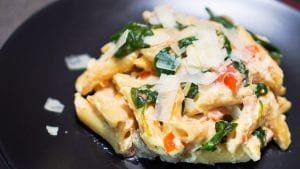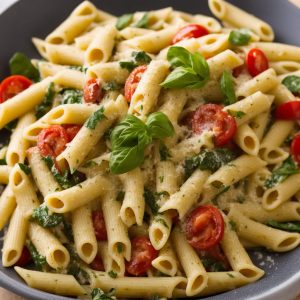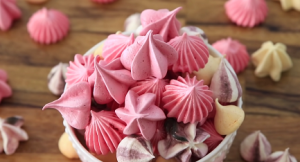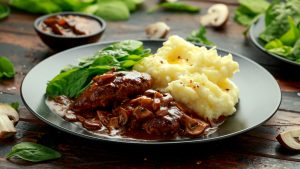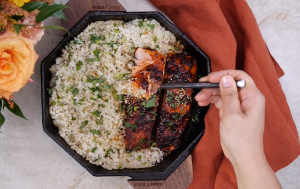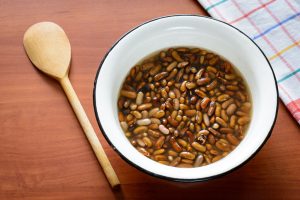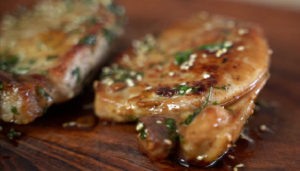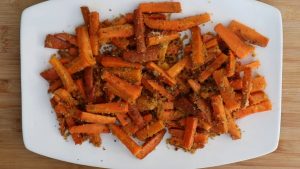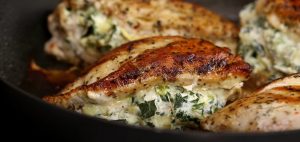Welcome to the exciting world of Pasta Primavera! This recipe is a blend of vibrant, crisp vegetables and rich, creamy pasta. A classic Italian dish, Pasta Primavera is the perfect option for a hearty dinner or a special occasion. The blend of fresh vegetables and creamy sauce is simply too tempting to resist.
Photos of Pasta Primavera Recipe
A few ingredients may not be commonly found in every kitchen. Cheese tortellini, a type of ring-shaped pasta filled with cheese, can be found in the pasta aisle of your supermarket or at an Italian deli. You may also need to pick up some fresh vegetables such as zucchini, asparagus, red pepper, broccoli, and snow peas. Finally, heavy cream, which is used to create a thick, rich sauce, can be located in the dairy section.
Pasta Primavera Essential Ingredients
Cheese tortellini: This is a type of pasta filled with cheese and gives a rich texture to the dish.
Butter: Adds a creamy, indulgent flavor to the dish.
Garlic: Provides a strong, pungent flavor that compliments the vegetables.
Zucchini, broccoli, asparagus, red pepper, carrots, petite peas, snow peas: These are the heroes of the dish, providing a fresh, vibrant contrast to the rich pasta and cream.
Chicken stock: This adds depth and flavor to the dish.
Heavy cream: Creates a thick, rich sauce for the pasta.
Cornstarch: This is used to thicken the sauce.
Parmesan cheese: Adds a sharp, tangy flavor to balance the creaminess of the dish.
One reader, Jeddy Wyatt says:





This pasta primavera recipe is a game-changer! The combination of fresh veggies and creamy sauce is simply divine. The flavors are so vibrant and the dish is incredibly satisfying. It's now a staple in my recipe collection. Highly recommend trying it out!
Key Techniques for Crafting Pasta Primavera
How to cook pre-made cheese tortellini: Follow the package directions to boil the tortellini until they are al dente. Drain and set aside.
How to make a slurry: In a small bowl, combine one tablespoon of cornstarch with some of the liquid from the pan. Mix it together until smooth before adding it to the skillet.
How To Make Pasta Primavera
In this pasta primavera dish, we are using different kinds of vegetables that offer layers of flavor. It’s absolutely easy to make this dish. Try it!
Serves:
Ingredients
- 16ozcheese tortellinicooked
- 3tbspbutter
- 1tspgarlicminced
- 1cupzucchinisliced
- ¼cupwater
- ½cupbroccoli florets
- ½cupasparagustrimmed
- ½cupred pepperdiced
- ½cupcarrotsdiced
- 1cupchicken stock
- 1cupheavy cream
- 1tbspcornstarch
- ½cuppetite peas
- ½cupsnow peas
- ½cupparmesan cheese
Instructions
-
Cook pre-made cheese tortellini according to package directions and set aside.
-
In a large skillet, add butter and melt over medium heat. Add garlic and saute for a minute.
-
Add zucchini and water. Stir it all together, let cook for 1 minute.
-
Add broccoli, asparagus, red pepper, and carrots, and cover, and steam for 3 to 4 minutes.
-
Remove the lid and add chicken stock, and heavy cream once the vegetables are cooked. Leave on the heat.
-
Make a slurry by combining one tablespoon of cornstarch with some of the liquid from the pan. Add the liquid to the corn starch in a small bowl, and mix together.
-
Pour slurry into the skillet, and add the two kinds of peas. Add parmesan cheese, and stir.
-
Add the pre-cooked cheese tortellini, and stir it all together. Leave on heat until sauce reaches desired thickness. Serve immediately.
Nutrition
- Calories: 775.85kcal
- Fat: 44.72g
- Saturated Fat: 26.57g
- Trans Fat: 0.35g
- Monounsaturated Fat: 12.70g
- Polyunsaturated Fat: 2.03g
- Carbohydrates: 67.94g
- Fiber: 4.91g
- Sugar: 7.96g
- Protein: 27.49g
- Cholesterol: 166.48mg
- Sodium: 844.52mg
- Calcium: 466.61mg
- Potassium: 531.49mg
- Iron: 3.22mg
- Vitamin A: 592.42µg
- Vitamin C: 54.74mg
Essential Technique for Perfecting Pasta Primavera
When making the slurry, it's crucial to mix the cornstarch with a cold liquid before adding it to the hot mixture. This prevents the cornstarch from clumping up when it hits the heat, ensuring a smooth and thickened sauce. Also, remember to add the cheese tortellini at the end of the cooking process to prevent it from becoming overcooked and losing its shape.
Time-Saving Tips for Preparing Pasta Primavera
Plan ahead: Prep all your ingredients and tools before starting to cook to streamline the process.
One-pot wonders: Opt for one-pot recipes to minimize cleanup and save time.
Batch cooking: Prepare larger quantities and freeze the extra portions for quick and easy future meals.
Prep in advance: Wash, chop, and store vegetables and herbs in advance for easy access during cooking.
Multitask: While one element is cooking, use that time to prep other ingredients to maximize efficiency.
Kitchen organization: Keep your kitchen organized to easily locate ingredients and tools, saving time during meal preparation.
Invest in time-saving tools: Use kitchen gadgets like food processors, slow cookers, and pressure cookers to expedite the cooking process.
Follow the recipe: Stick to the recipe to avoid mistakes that could lead to time-consuming fixes.
Clean as you go: Wash and put away utensils and dishes as you cook to minimize cleanup time at the end.
Use leftovers: Repurpose leftovers into new dishes to save time on meal preparation.
Substitute Ingredients For Pasta Primavera Recipe
cheese tortellini - Substitute with spinach and ricotta ravioli: Both are filled pasta options, and the spinach and ricotta ravioli can provide a similar creamy and flavorful experience.
butter - Substitute with olive oil: Olive oil can add a rich flavor and can be a healthier alternative to butter.
garlic - Substitute with shallots: Shallots can provide a milder, slightly sweet flavor similar to garlic, and they can be a great alternative in this recipe.
zucchini - Substitute with yellow squash: Yellow squash has a similar texture and flavor profile to zucchini, making it a suitable substitute.
broccoli florets - Substitute with cauliflower florets: Cauliflower can provide a similar texture and absorb flavors well, making it a good substitute for broccoli in this recipe.
asparagus - Substitute with green beans: Both vegetables have a similar crunch and can add a fresh, vibrant element to the dish.
red pepper - Substitute with yellow pepper: Yellow peppers can offer a slightly sweeter flavor and vibrant color, similar to red peppers.
carrots - Substitute with bell peppers: Bell peppers can add a crunchy texture and a pop of color, similar to carrots.
chicken stock - Substitute with vegetable stock: Vegetable stock can provide a savory base and enhance the flavors of the dish, similar to chicken stock.
heavy cream - Substitute with coconut milk: Coconut milk can add a creamy texture and a hint of sweetness, serving as a dairy-free alternative to heavy cream.
cornstarch - Substitute with all-purpose flour: All-purpose flour can be used as a thickening agent in place of cornstarch to achieve a similar consistency in the dish.
petite peas - Substitute with edamame: Edamame can provide a similar pop of green color and a slightly nutty flavor, similar to petite peas.
snow peas - Substitute with sugar snap peas: Sugar snap peas have a similar crunch and sweet flavor, making them a suitable substitute for snow peas.
parmesan cheese - Substitute with pecorino Romano cheese: Pecorino Romano cheese has a similar sharp and salty flavor to Parmesan, making it a great alternative for adding a savory kick to the dish.
Presenting Pasta Primavera for Maximum Appeal
Elevate the plating: When presenting the pasta primavera, focus on creating a visually stunning plate. Use vibrant and colorful vegetables to create an eye-catching display. Consider using the tortellini as the centerpiece and arranging the vegetables in an artful and appealing manner around it.
Emphasize balance and harmony: Ensure that the elements on the plate are balanced in terms of color, texture, and flavor. The dish should showcase the freshness and natural beauty of the vegetables while also highlighting the richness of the creamy sauce and the savory tortellini.
Incorporate garnishes: Add a final touch of elegance to the dish by incorporating edible garnishes such as microgreens, shaved parmesan cheese, or a drizzle of high-quality olive oil. These garnishes not only enhance the visual appeal but also contribute to the overall flavor profile of the dish.
Pay attention to plate composition: Consider the placement of each component on the plate to create a sense of movement and balance. Utilize negative space to allow the dish to breathe and to draw attention to the vibrant colors and textures of the pasta primavera.
Focus on precision and attention to detail: Every element on the plate should be meticulously placed with care and precision. Pay attention to the alignment and arrangement of the components to create a visually striking presentation that reflects the artistry and skill behind the dish.
Essential Tools for Making Pasta Primavera
- Skillet: A flat-bottomed pan used for frying, searing, and sautéing ingredients.
- Large pot: Used for boiling pasta, blanching vegetables, and preparing soups and stews.
- Small bowl: Used for mixing small amounts of ingredients or creating dressings and sauces.
- Whisk: Used for blending, whipping, and beating ingredients together.
- Slotted spoon: Used for lifting and draining foods from liquids.
- Chefs knife: A versatile kitchen knife used for chopping, slicing, and dicing ingredients.
- Cutting board: Provides a stable surface for cutting and preparing ingredients.
- Measuring cups and spoons: Used for accurately measuring ingredients for recipes.
- Grater: Used for grating cheese, vegetables, and other ingredients.
- Tongs: Used for flipping, turning, and serving foods.
- Lid: Used for covering and steaming ingredients in a skillet or pot.
- Slurry bowl: A small bowl used for creating a slurry with cornstarch and liquid.
- Colander: Used for draining pasta and rinsing vegetables.
- Serving platter: Used for presenting and serving the finished dish.
Storing and Freezing Pasta Primavera for Later
- To store leftover pasta primavera, allow it to cool completely to room temperature before transferring it to an airtight container. Refrigerate for up to 3-4 days.
- When reheating refrigerated pasta primavera, add a splash of chicken stock or heavy cream to help loosen the sauce and prevent the pasta from drying out. Reheat gently over medium-low heat, stirring occasionally, until warmed through.
- To freeze pasta primavera, it's best to freeze the sauce separately from the tortellini. Allow the sauce to cool completely, then transfer it to a freezer-safe container or resealable plastic bag. Freeze for up to 2-3 months.
- When ready to enjoy the frozen pasta primavera, thaw the sauce overnight in the refrigerator. Reheat the sauce in a skillet over medium heat, stirring occasionally and adding a little chicken stock or heavy cream if needed to thin the sauce.
- Cook the tortellini according to package instructions, then toss with the reheated sauce and serve immediately.
- Note: The vegetables in the pasta primavera may lose some of their texture and crispness after being frozen and reheated, but the dish will still be flavorful and enjoyable.
How To Reheat Pasta Primavera Leftovers
The best way to reheat leftover pasta primavera is to use a skillet or sauté pan on the stovetop. Place the desired amount of pasta in the pan and add a splash of chicken stock or heavy cream to help loosen the sauce and prevent the pasta from drying out. Heat over medium-low heat, stirring gently, until the pasta is heated through and the sauce is warm and creamy.
Another option is to use the microwave, but be careful not to overheat the pasta, as it can quickly become mushy. Place the leftover pasta primavera in a microwave-safe dish and add a small amount of chicken stock or heavy cream. Cover the dish with a damp paper towel to help retain moisture. Microwave on high for 30-second intervals, stirring between each interval, until the pasta is heated through and the sauce is warm.
If you have a bit more time, you can reheat the pasta primavera in the oven. Preheat the oven to 350°F (175°C). Place the leftover pasta in an oven-safe dish and add a small amount of chicken stock or heavy cream to help keep the pasta moist. Cover the dish with foil and bake for 15-20 minutes, or until the pasta is heated through and the sauce is bubbly.
Regardless of the reheating method you choose, be sure to taste the pasta primavera and adjust the seasoning as needed. You may want to add a sprinkle of fresh parmesan cheese or a dash of salt and pepper to brighten up the flavors. If the sauce seems too thick, add a bit more chicken stock or heavy cream to help loosen it up.
To help maintain the texture of the vegetables in your leftover pasta primavera, you can reheat them separately from the pasta and sauce. Simply sauté the vegetables in a pan with a bit of butter or olive oil until they are heated through and tender-crisp. Then, add them back to the reheated pasta and sauce just before serving.
Surprising Fact About Pasta Primavera
Pasta Primavera is a classic Italian dish that was created in the 1970s at Le Cirque restaurant in New York City. It was originally made with fresh vegetables in a light cream sauce, and it quickly became a popular and beloved dish in Italian cuisine.
Is Making Pasta Primavera at Home Cost-Effective?
This pasta primavera recipe is quite cost-effective for a household. The use of seasonal vegetables and affordable pantry staples makes it a budget-friendly option. The addition of cheese tortellini and parmesan cheese may slightly increase the cost, but the overall expense is reasonable. The versatility of this dish also makes it a great option for utilizing leftover vegetables, reducing food waste. The approximate cost for a household of 4 people would be around $15-$20. Overall Verdict: 8/10
Is Pasta Primavera Healthy or Unhealthy?
The pasta primavera recipe, while delicious, is not particularly healthy due to several factors:
- The dish is high in calories and fat, mainly from the heavy cream, butter, and cheese tortellini. These ingredients can contribute to weight gain and increased risk of heart disease if consumed in excess.
- The recipe lacks a significant amount of fiber, which is essential for maintaining a healthy digestive system and promoting feelings of fullness.
- The vegetable content is relatively low compared to the amount of pasta and cream sauce, which means the dish may not provide a balanced mix of nutrients.
However, the recipe does include a variety of vegetables, such as zucchini, broccoli, asparagus, red pepper, and carrots, which offer some nutritional benefits.
To make this pasta primavera recipe healthier, consider the following suggestions:
- Swap the cheese tortellini for whole grain pasta or zucchini noodles to increase the fiber content and reduce the calorie and fat content.
- Replace the heavy cream with a lighter alternative, such as low-fat milk or Greek yogurt, to maintain a creamy texture while cutting down on fat and calories.
- Increase the proportion of vegetables to pasta, aiming for a 50/50 ratio or even higher. This will boost the nutrient density of the dish and provide more fiber, vitamins, and minerals.
- Reduce the amount of butter and cheese used, or opt for lower-fat versions to decrease the overall fat content.
- Add lean protein sources, such as grilled chicken or shrimp, to make the dish more balanced and satisfying.
Editor's Take on the Classic Pasta Primavera Recipe
The pasta primavera recipe you've provided is a delightful combination of flavors and textures. The use of cheese tortellini adds a rich and comforting element to the dish, while the medley of fresh vegetables brings a vibrant and wholesome touch. The creamy sauce, thickened with a cornstarch slurry, ties everything together beautifully. However, to enhance the dish further, consider incorporating fresh herbs like basil or parsley for a burst of freshness. Overall, this recipe offers a satisfying and well-balanced meal that is sure to please the palate.
Enhance Your Pasta Primavera Recipe with These Unique Side Dishes:
Delicious Alternatives to Pasta Primavera
Perfect Appetizers and Desserts for a Pasta Primavera Meal
Why trust this Pasta Primavera Recipe:
This recipe offers a delightful combination of fresh vegetables and savory cheese tortellini, creating a harmonious blend of flavors and textures. The use of chicken stock and heavy cream ensures a rich and creamy sauce, while the addition of parmesan cheese provides a satisfying depth of flavor. The method of creating a slurry with cornstarch ensures the perfect consistency for the sauce. With a balance of vibrant zucchini, broccoli, asparagus, and other colorful vegetables, this recipe promises a delightful and wholesome dining experience.
Was this page helpful?
Have your own special recipe to share? Submit Your Recipe Today!
